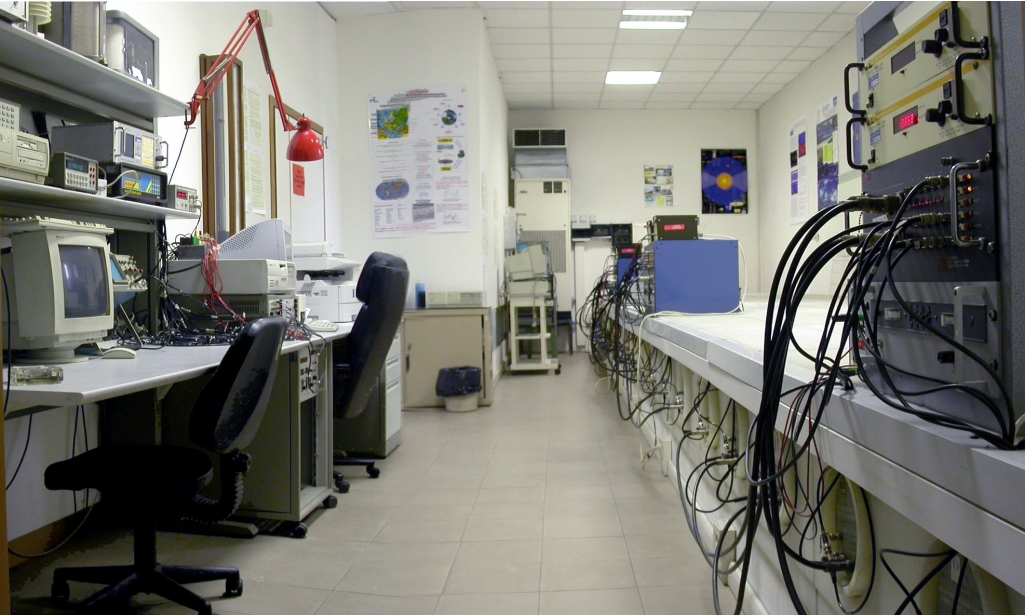Rome, Italy
Rome - SVIRCO Observatory
The cosmic ray station of Rome joined the worldwide network of neutron monitors with the purpose to study the time variations of primary cosmic rays (Studio Variazioni Intensità Raggi Cosmici: S.V.I.R.CO.) and their modulation in the heliosphere. From July 1957 to April 1997, the SVIRCO Station (now Observatory) performed uninterrupted measurements at the Physics Department “G. Marconi” of “La Sapienza” University of Rome (41.90° N, 12.52° E, altitude about 60 m asl). In May 1997 the neutron monitor was moved into the Physics Department “E. Amaldi” of “Roma Tre” University. Since then SVIRCO Observatory (INAF/IFSI-UNIRomaTre collaboration) has been continuously operating at the new location (41.86° N, 12.47° E, about sea level).

The building of the neutron monitor has been provided with a double air-conditioning system so that the inner temperature and the relative humidity are continuously controlled. All the 20 BF3 proportional counters (BP-28 type) are equipped with amplifier/discriminator circuits improved with spectrum stabilizers. The new electronic unit, developed in our laboratory, fixes the pulse height spectrum of the amplifier output and provides each counter with a great immunity against high voltage variations within a range of more than 150 volts around the operating voltage. Anyway, systematic and exhaustive tests of the counters are regularly performed by means of a multi-channel analyzer, since the examination of the pulse height distribution is essential to verify the long term efficiency of each counter together with the amplifier gain and the discriminator threshold level.
Specifications
| Detector | 20-NM64 |
| three 3-counter, one 5-counter and one 6-counter units | |
| Geographic latitude | 41.86° N |
| Geographic longitude | 12.47° E |
| Altitude | Sea level |
| Effective vertical cutoff rigidity (Epoch 1995.0) | 6.27 GV |
| In operation since: | 1957 |

In order to improve the reliability of the recorded data and to prevent measurement breakdowns, two independent systems perform contemporary the data acquisition. Each system is remotely controlled by a dedicated computer and is timed by a high stability quartz clock and/or a GPS receiver. One equipment runs according to a timing of 1 minute and fulfils the acquisition of the 20 counters separately. The other one records the individual 5-minute counting rate of each detector section in addition to the rates of the overall multiplicity, sorted into separated counting channels (from 1 to greater than 8).
The atmospheric pressure measurements are carried out by means of not less than three barometers at the same time. These instruments, achieving a resolution up to 0.01 hPa, are constantly checked out each other for the best measuring accuracy and reliability. Furthermore the devices in use are equipped with different types of transducer such as vibrating cylinder, force balance and quartz, therefore, throughout their different behaviours, it is possible to point out the occurrence of any long-term drift and eventually to re-calibrate the instruments.
Finally the overall stability of the monitor is controlled by means of the section ratios. The hourly counting rate of each section, divided by the total rate, is plotted in real time on a daily diagram. Moreover, the daily averages of these ratios are separately plotted, as percentage, in monthly and annual histograms.